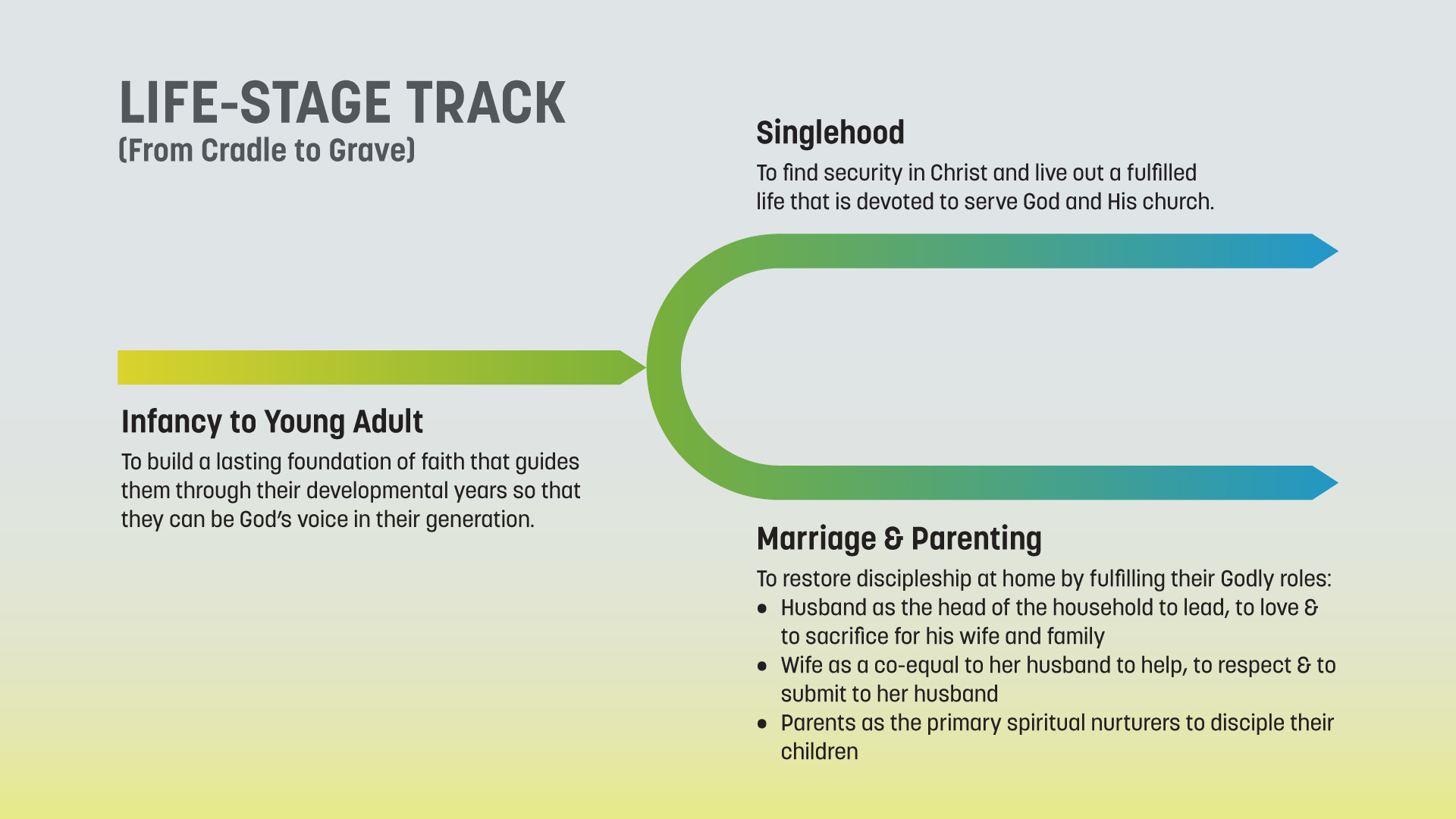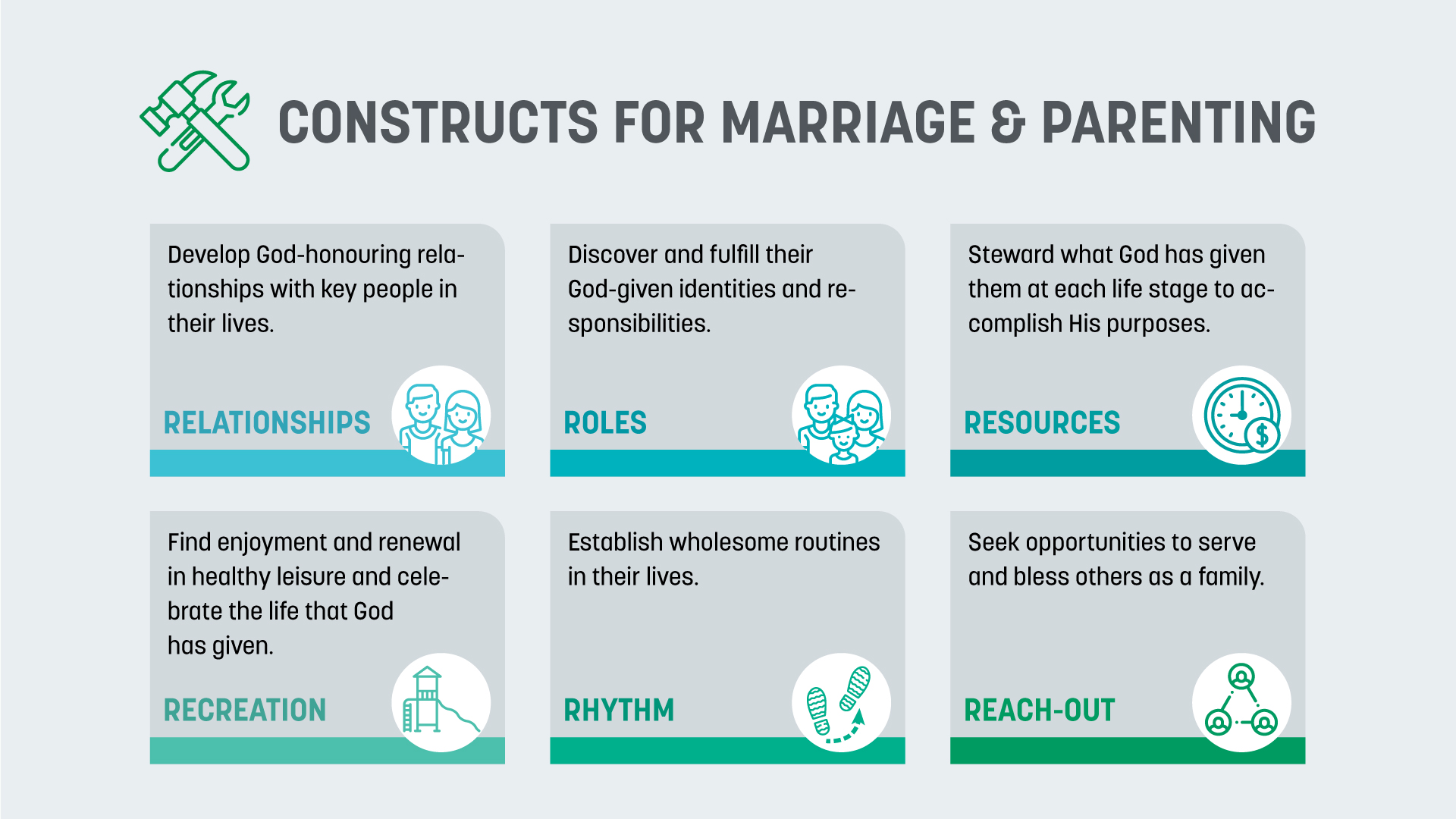
In the two previous issues of The Gracian in October 2020 and January 2021, you have read much about the development of the Grace Discipleship Framework. God is indeed doing a great work through the Grace Discipleship Institute (GDI) team and the team of passionate Gracians partnering with us. After reading about the Disciple-Maker Track, I hope it has inspired you to embark with us on this track to see how God can transform you, your life, your family, your job and all your relationships. Apart from the Disciple-Maker Track, the GDF also includes two other tracks: the Life-Stage Track and the Leadership Track. These three tracks will offer a wholistic approach in the making of disciples. In this issue, we will continue to unveil the Life-Stage Track (LST).
Each person is an image-bearer of God (imago Dei). Christian theology sees humans holistically as material and immaterial, body and soul-spirit. This holistic view involves both an understanding of developmental theories and theological truths. In our biological growth, we move through life stages. Developmental theories help us to understand the physical, cognitive, and psychosocial development needs of a believer throughout their life span. Physical development involves growth and changes in the body and brain, the senses, motor skills, and health and wellness. Cognitive development involves learning, attention, memory, language, thinking, reasoning, and creativity. Psychosocial development involves emotions, personality, and social relationships. Theological truths help us to teach God’s Word in the most effective ways to meet those developmental needs and empower the believer in their faith journey as they grow from one stage into another. Thus the LST framework will help us assess the developmental needs and chart the growth of the believer from cradle to grave.
The LST framework consists of three distinct life stages which includes infancy to young adult, singlehood and the marriage-parenting. Each life stage is defined by unique goals and constructs.

Constructs are key areas of developmental needs that surface in every life stage and across the life span of the believer. These constructs are Relationships, Roles, Rhythm, Recreation, Resources and Reach-out. Each of these constructs are meant to be broad enough to include as many areas of needs and growth.
At each life stage, believers need:
• RELATIONSHIPS: Develop God-honouring relationships with key people in their lives, e.g. student managing peer pressure, young adult looking for life partner, spouse resolving marital conflict, couples building relationship with in-laws, etc.
• ROLES: Discover and fulfill their God-given identities and responsibilities, e.g. a son/daughter honouring their parents, a student excelling in his/her studies, a husband leading the family, a wife supporting her husband as co-equal, parents nurturing their children, an employee glorifying God through diligent work, etc.
• RESOURCES: Steward what God has given to them at each life stage to accomplish His purposes, e.g. students managing school and church life, young adult developing giftings and passion for God’s work, family learning the value and habit of tithing and being generous in blessing others, etc.
• RECREATION: Find enjoyment and renewal in healthy leisure and celebrate the life that God has given, e.g. setting aside time to have fun with loved ones, enjoying God’s creation in nature, creating family and life milestones, etc.
• RHYTHM: Establish wholesome routines in their lives, e.g. to inculcate spiritual disciplines like fasting and prayer, building family altar, scheduling time for Sabbath rest, and to handle school stress or balancing work demands, etc.
• REACH-OUT: Seek opportunities to serve and bless others as a family, e.g. walking with a classmate/colleague in need, blessing the needy in one’s community, serving the local church, doing missions/evangelism as a family together, etc.
With this comprehensive perspective to meet needs and direct growth, the believers can then accomplish God’s task at each stage of their life. Now, with a deeper appreciation of the LST, we hope that you will be inspired to embark on this journey with us. In the next issue, we will unveil more of the LST on marriage and family.

